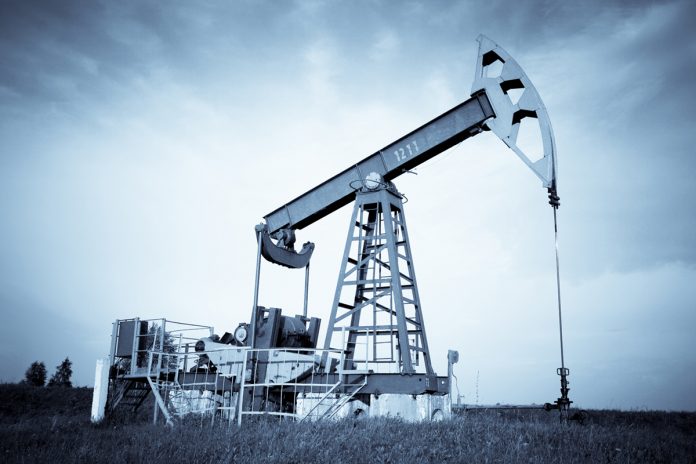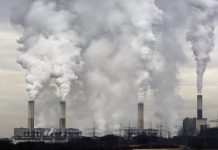Professor and NSERC/Chevron Industrial Research Chair, David W. Eaton, talks about the need to ensure hydrocarbon resources are developed responsibly
Fossil-fuel supply chains have been radically altered by the unprecedented development of low-permeability hydrocarbon resources (LPHRs), especially North American shale gas, tight oil and, more recently, liquid-rich shale plays. Access to these vast low-permeability hydrocarbon energy resources has been driven by new technologies, primarily massive, multi-stage hydraulic fracturing and long-reach horizontal drilling. While there are opponents and proponents of the development of LPHRs, it is generally much less controversial in jurisdictions that have a legacy of oil and gas activities. Even so, the deployment of these disruptive technologies has, to a large extent, outpaced the advancement of fundamental scientific understanding of underlying physical processes as well as the capacity of agencies to implement science-informed regulations.
How can economic, environmental and social considerations be brought to bear on these complex issues? The concept of responsible development entails a holistic approach in which environmental, economic and social considerations are integrated, based on transparent, science-informed regulations that inspire public confidence. This article applies this philosophy to key aspects of scientific research and training of highly qualified personnel that are essential for the responsible development of LPHRs, within a framework that embodies the need to reduce environmental impacts, as well as resource intensity.
Improved efficiency
Commercial extraction of LPHRs is enabled by the drilling of horizontal wellbores that are completed in multiple stages using massive (typically water-based) hydraulic-fracture stimulation treatments. Current practice in the unconventional oil and gas industry uses a ‘factory’ design philosophy with uniform spacing of stages along the wellbore and is trending toward increasing the number of fracture stages along with increasing the net injected volume. Further, horizontal laterals are being placed closer together in the horizontal plane, and vertically in the development of “stacked” LPHR plays. This trend places enormous stress on resource utilisation, including water use, as well as the energy required for resource extraction. Research is currently underway to support the development of enhanced fracture-design and surveillance technologies, based on new geophysical, well-test, and geochemical imaging techniques combined with laboratory measurements of reservoir properties, displacement phenomena, and modelling through digital core analysis. The goal of this research is to develop a more efficient approach that combines reservoir (‘sweet spot’) targeting with improved fracture surveillance and numerical simulation methods, such that less intensive but more effective hydraulic fracturing stimulation can be achieved.
Environmental impacts
Natural gas derived from LPHRs is sometimes promoted as a cleaner fuel that could enable a smoother economic transition away from coal towards renewables. The effectiveness of this strategy, however, depends upon the amount of methane emitted into the atmosphere (‘fugitive emissions’) from resource extraction processes and delivery to the customer. Intensive use of hydraulic fracturing for LPHR development has also generated public concerns regarding the potential contamination of surface waters and groundwaters and soils. These concerns arise from the potential for groundwater contamination due to fugitive gases that escape from the wellbore and/or contamination from flow back fluids containing saline formation waters and chemicals used during hydraulic fracturing.
A significant impediment to informed public debate is a general lack of quantitative data, including baseline groundwater data. Furthermore, knowledge is lacking concerning effective and scientifically defensible approaches for accurate assessment of potential environmental impacts on shallow freshwater resources and the atmosphere associated with the development of LPHRs. Together with improved extraction efficiency, the acquisition of new data and development of improved regional and local monitoring technologies are topics of ongoing collaborative research.
Induced seismicity
Earthquakes induced by activities linked to LPHR development have galvanised public attention. Despite vigorous research since the 1960’s on the topic of injection-induced earthquakes, fundamental questions remain unanswered. For scenarios, other than hydraulic fracturing, the basic triggering mechanism of injection-induced seismicity is thought to be a pore-pressure increase within a diffusively expanding region. Fault activation by hydraulic fracturing is more complex and even a basic understanding of the phenomenology requires improved knowledge of fracture and fault characteristics over a wide range of spatial and temporal scales. The challenge is exacerbated by the subtle expression of potentially active faults using existing imaging techniques. Finding science-informed solutions is an urgent priority for industry and regulators.
In Canada and elsewhere, regulations are largely based on ad hoc traffic light protocols (TLPs), which mandate operational changes (or complete shutdown) in response to uncertain observed parameters, such as computed magnitude and proximity of the event to the injection site. Provisions for TLPs have been developed by combining current industry best practice with trial-and-error; arguably, such an approach is not conducive to scientific innovation – or fostering of public confidence in the regulatory framework. Underlying this is the issue of how to mitigate and to manage risks of induced seismicity from hydraulic fracturing. Solutions will demand a departure from a business-as-usual approach to academic research.
Collaboration and interdisciplinary training
There are several common cross-cutting issues that need to be addressed in order to achieve the goal of responsible development of LPHRs. First, the development of improved scientific understanding needed to inform industry practices and regulatory frameworks, and to deal with complex associated socioeconomic issues, will require an open dialogue and extensive cross-sector collaboration between academia, industry and government. Moreover, the next generation of leaders who are critically needed to implement the global energy transition must draw from an exceptionally broad interdisciplinary understanding of the relevant issues. Timely progress means that these leaders must possess both a depth of expertise developed within traditional science and engineering disciplines, together with a complementary breadth of experience working with business, legal and social-science paradigms.
Reducing the impact of fossil-fuel extraction
A fundamental transformation of global energy systems is essential in order to achieve the ambitious goals of the 2015 Paris Agreement on climate change. Global energy demand is increasing; even with aggressive deployment of renewables, fossil fuels will continue to provide a major contribution to global energy supply over the coming decades. There is, therefore, an urgent need to reduce greenhouse-gas emissions and other environmental impacts of fossil-fuel extraction.
David W. Eaton
Professor and NSERC/Chevron
Industrial Research Chair
Microseismic System Dynamics
University of Calgary
Tel: +1 403 220 4233
eatond@ucalgary.ca
Please note: this is a commercial profile











